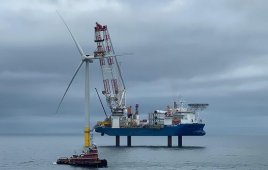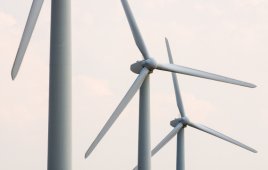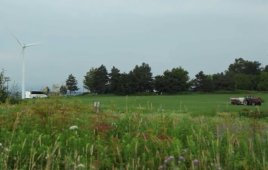The following is the introduction to the Global Wind Energy Council annual review written by Secretary General Steve Sawyer and Chairman Klaus Rave of the Global Wind Energy Council.
For the first time in more than 20 years, the annual global market for wind energy shrank in 2013. We knew that this was likely to be the case when we did our forecast for 2013 one year ago, but we didn’t expect the drop in the United States to be as dramatic as it was — going from 13 GW in 2012 to just 1 GW in 2013. China once again emerged as the global leader, installing 16 GW, while European numbers were steady, resulting in a global market of just over 35 GW, and cumulative market growth of 12.5%. As has been the case for three of the past four years, most installations were outside the OECD, and this is a trend which will continue to intensify with the emergence of significant markets in Latin America and Africa along with those in Asia, which currently drive global growth. Ironically, partly because of the precipitous drop in the U.S. in 2013, 2014 promises to be a record year.
The US had an all-time high of more than 12,000 MW under construction in December of 2013, and the nature of last year’s PTC extension means that 2014 and 2015 will be solid and productive years for U.S. installations as a result.
But what comes next? There are proposals before Congress now which would end the destructive boom-bust cycle in the US — let’s hope they succeed. China’s market continues its comeback, driven at least in part by public anger at the choking smog engulfing China’s major cities. Also, the offshore segment in China is expected to take off in the next year or two. Brazil will most likely double its total installed capacity in 2014 and nearly do so again in 2015; and the South African market is finally out of the starting blocks.

Canada had a record year in 2013 and will likely set a new one in 2014, although the prospects after 2015 are also uncertain. Europe remains mired in a debate about its support for renewable energy after 2020, and policy retrenchments in a number of countries have meant that although Europe’s market posted strong numbers in 2013, future growth now hinges on the debate over whether or not to have binding national targets for renewable for the period from 2020 to 2030. Installing just over 12 GW, the market was concentrated in a smaller number of countries, with Germany and the UK comprising just under 50% of the total, reversing the diversification trend of recent years, which is not a good sign.
The Indian market is likewise in a state of uncertainty, with erratic policy from Delhi, although it is hoped that the elections in May will help get that market back on track. So, for 2014 and beyond, we can look for most of the growth in the global market to come from new and established markets outside the OECD.
“A rising tide floats all ships,” in the sense that it’s much easier for wind to get strong market share in a dynamic and growing economy with significant demand growth. It’s much tougher in markets with low or no demand growth, where the competition and mud-slinging from incumbents is fierce. In the absence of a global price on carbon, or anything close to it, wind energy’s other attributes come to the fore. Today in many markets its most compelling selling point is cost competitiveness – wind is already competing successfully against heavily subsidized incumbents in a growing number of markets around the world, as the technology and its implementation steadily improve. Job creation remains a priority just about everywhere.
Furthermore, recent events in the Ukraine and elsewhere point to wind energy’s contribution to energy security. This is the ninth annual report on the status of the global wind industry by the Global Wind Energy Council. It provides a comprehensive overview of the global industry at a moment in time. The industry is now present in more than 80 countries, 24 of which have more than 1,000 MW installed.
The information contained in the report — market data, profiles and analysis have been collected primarily through GWEC’s member associations around the world, as well as from governments and independent analysts.
To read the full GWEC report, click here.
Global Wind Energy Council
www.gwec.net
Filed Under: Featured, Financing, Policy




